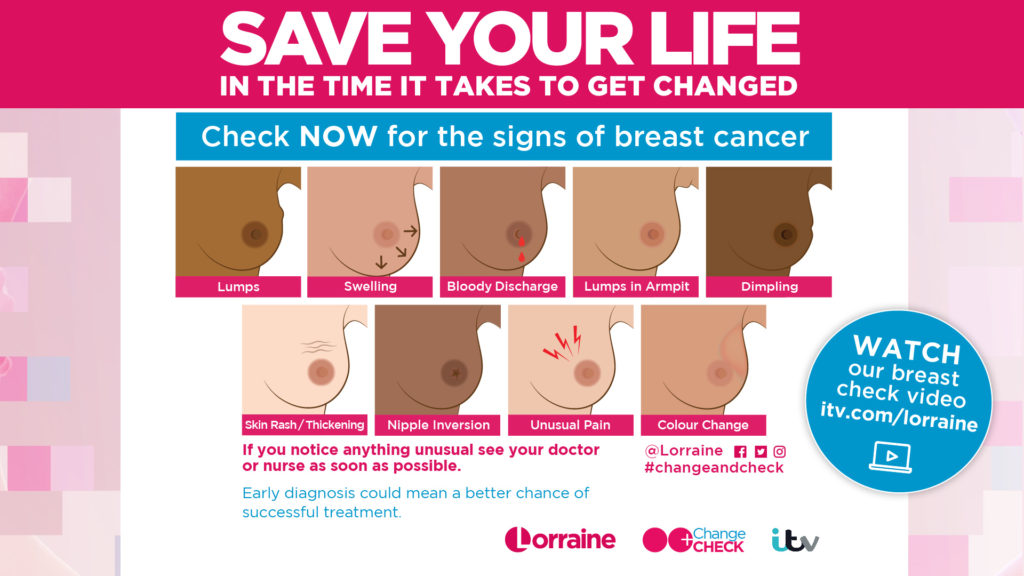
Somehow it’s already October and that means Pumpkin Spice Lattes, darker nights and Breast Cancer Awareness Month.
While we encourage getting up close and personal with breast checks all year round, this month we are taking part in the Change & Check campaign. This life-saving campaign is all about learning what changes to check for (hence the name!)
It was set up by Helen Addis (also know as @thetittygritty), who is the Features Editor for Lorraine ITV, after her own experience being diagnosed with stage 3 breast cancer.
Change & Check
Helen discovered people didn’t really know what to look for when they were checking their breasts, so she created a handy guide which you can download here – don’t forget to share it with your family and friends.

Dr Hilary has also shared his step-by-step guide to checking your breasts – you can watch via the ITV website.
Signs and symptoms to look for:
Visible changes in shape or size.
Skin changes such as; dimpling, puckering or rash around the nipple.
Lumps or bumps.
Bloody discharge from the nipple.
How to check:
Sit comfortably in front of a mirror with hands on your hips so chest muscles are relaxed.
Firstly, look at the contour of the breast to check that it matches on each side and see if there is any puckering or dimpling.
Look for any change in the nipple such as a rash, indrawing or pulling in.
Look for any skin change all around the nipple.
Using the fingers of your left hand to examine the right breast, walk your middle three fingers around the breast. You’re feeling for any abnormal lumps or bumps or any irregularity that hasn’t been there before.
Divide the breast into four quarters.
Start on the inner upper quarter, walking those fingers around the breast.
Do the same on the lower inner quarter and then across to the lower right quarter and then the upper right quarter.
Walk fingers up to the tail of the breast in the armpit.
Walk your fingers back to the areola around the nipple.
Repeat steps above on the left breast, using your right hand to do so.
Dr Hilary advises that menstruating women check their breasts following their period each month. For menopausal and post-menopausal women, pick a date each month that suits you.
If you notice anything unusual, see your doctor or nurse as soon as possible. Early diagnosis could mean a better chance of successful treatment.